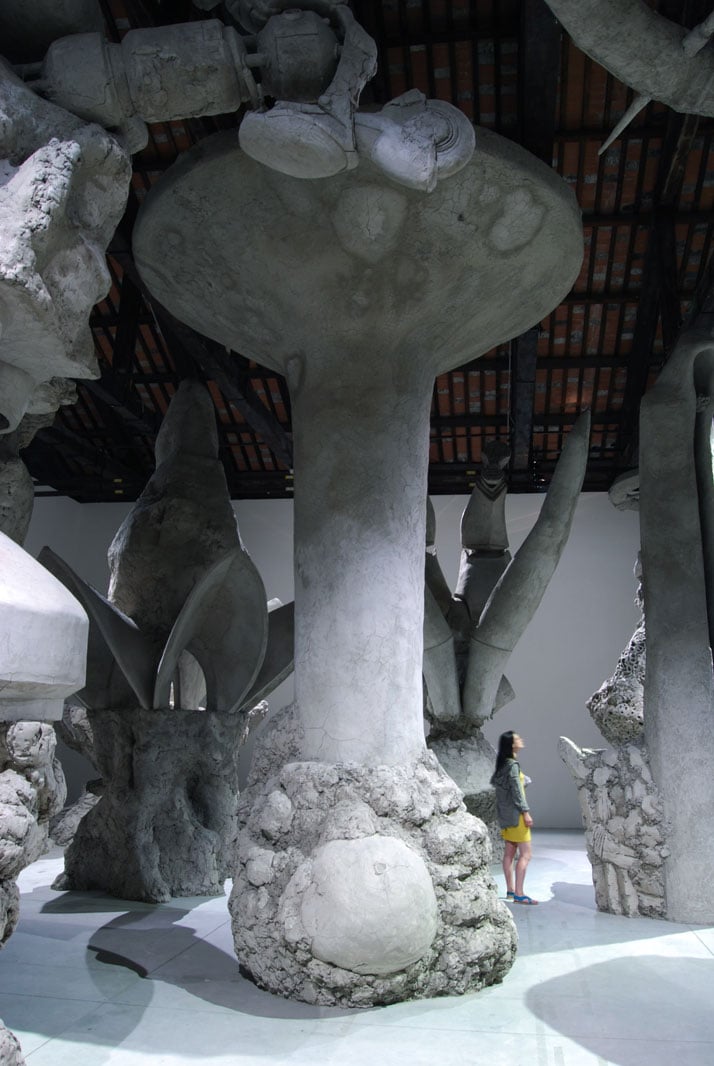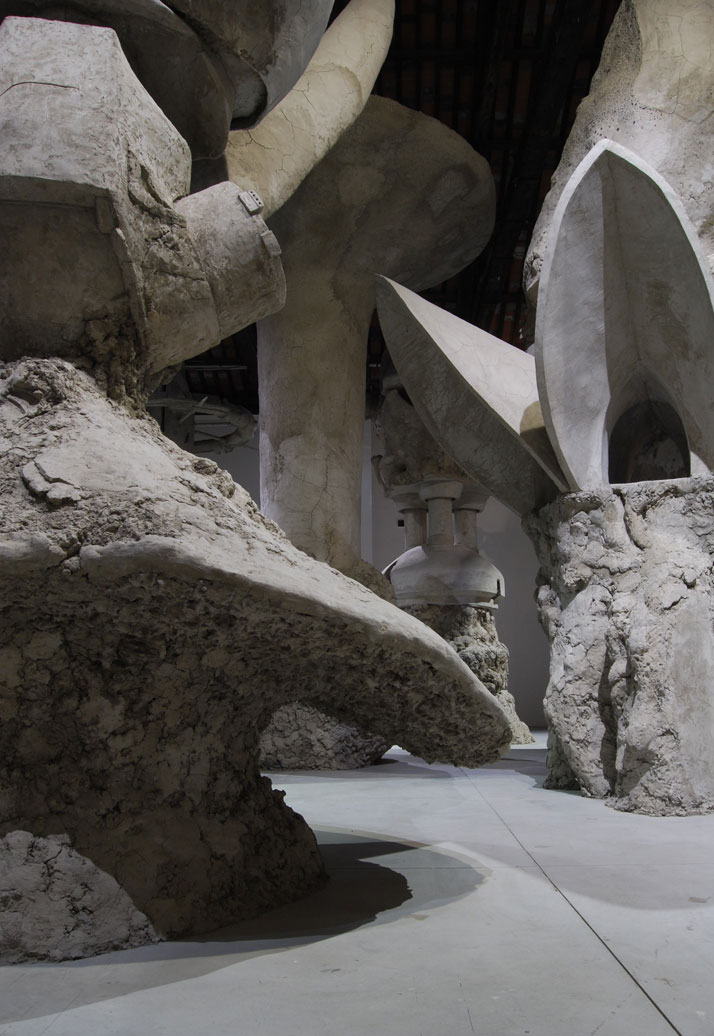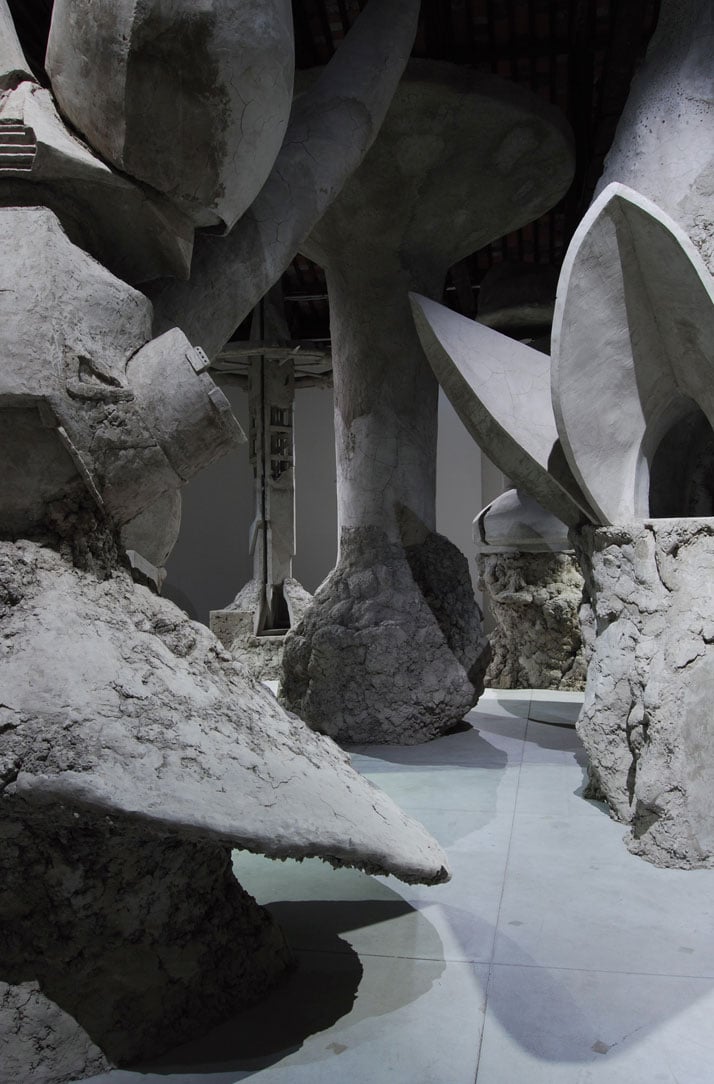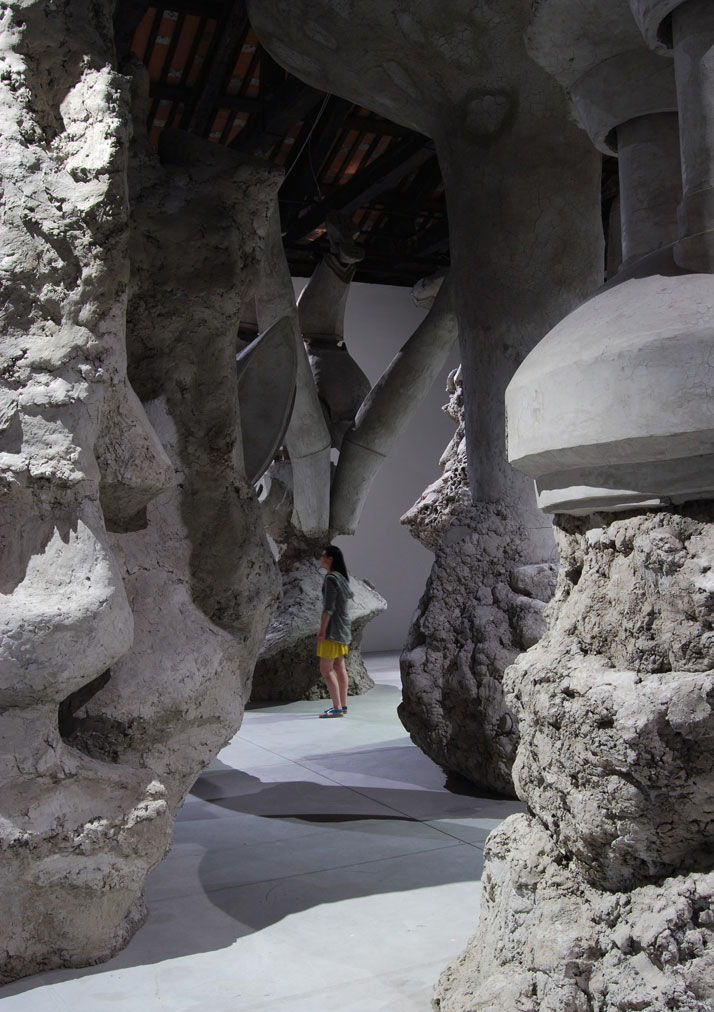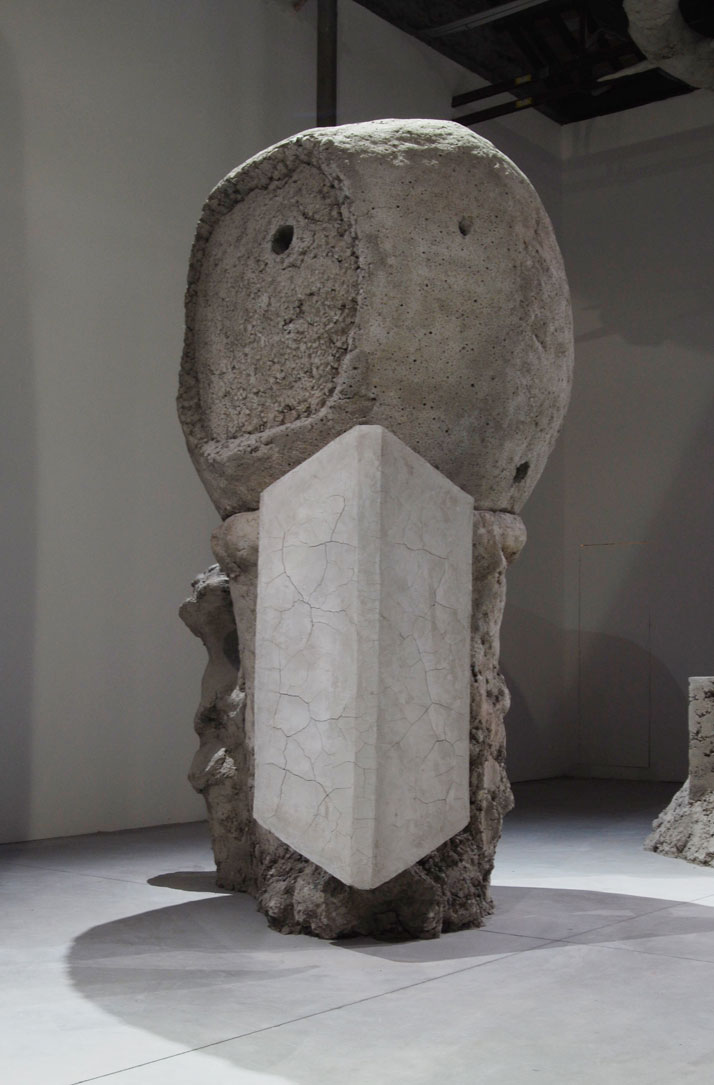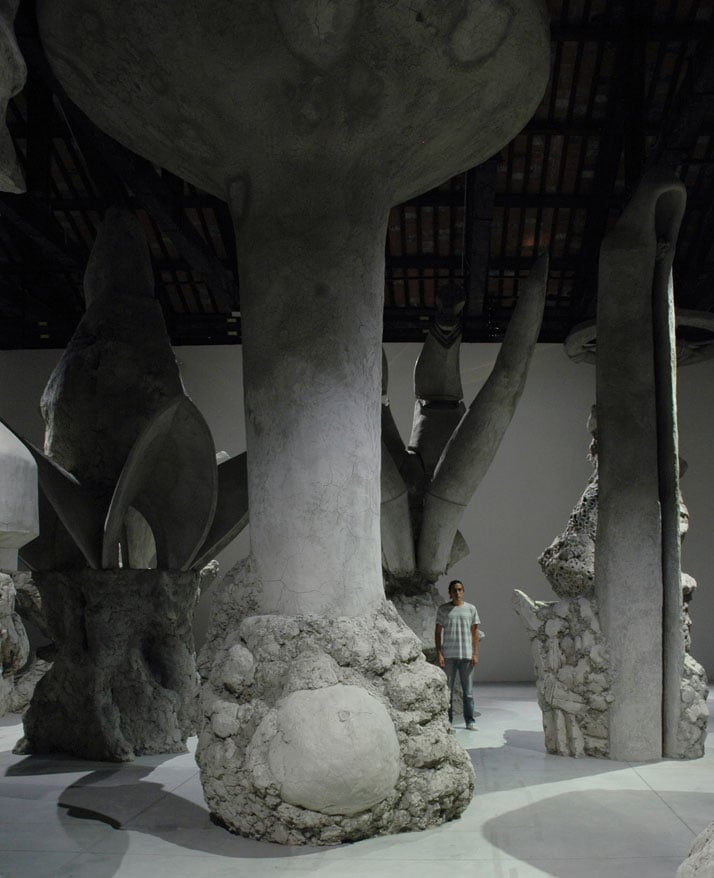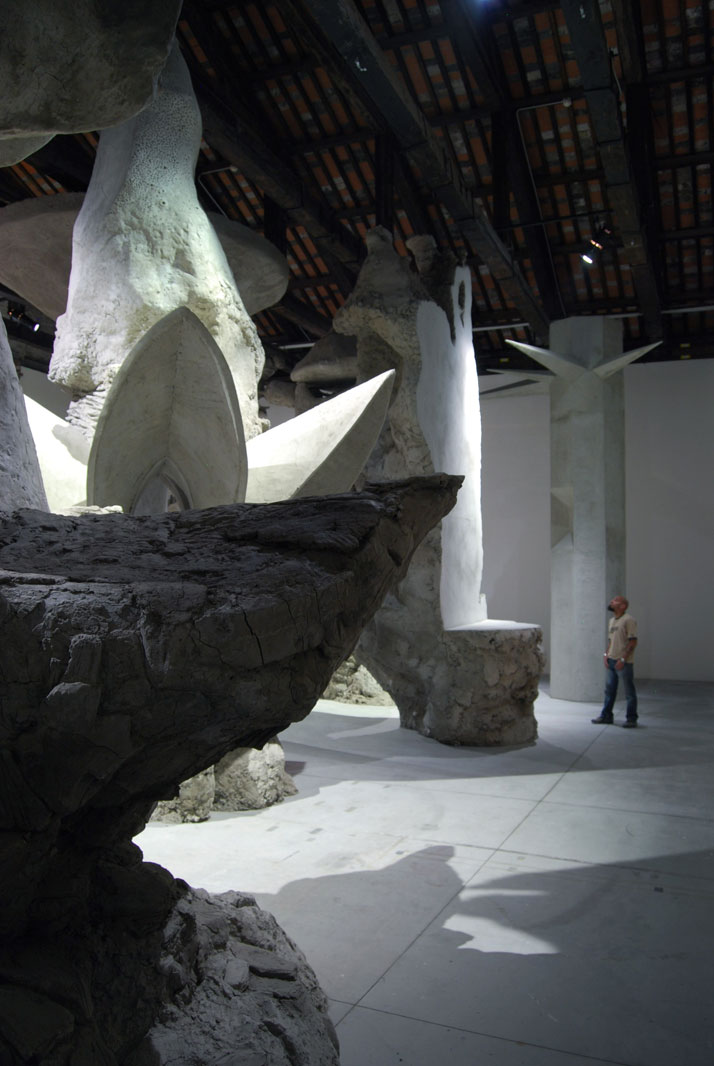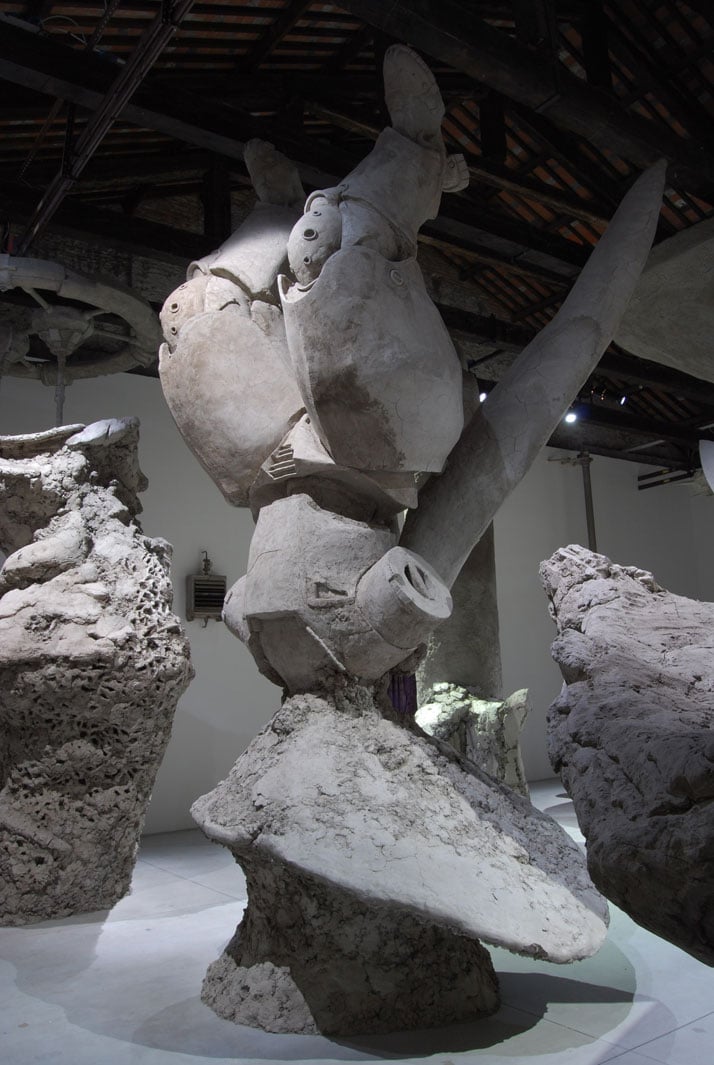You are reading
Adrián Villar Rojas’ Larger than Life Sculptures From Another Universe
> *Adrián Villar Rojas* is a talented young artist who has been receiving
important critical attention over the last few years. With him representing
Argentina at the Venice Biennial, we deepen our compromise with the emergent
production, insufflate energy and vitality to the new venue, and bet on the
future by creating a platform with which to establish an ongoing dialogue
with the international art scene." /*///////* / "His work possesses a
distinct personal tone. It combines formal experimentation with the
construction of a narrative, which allows him to reflect on art, its forms of
appearance, and its meanings, as if it were the end of time and the end of
the world. His last pieces are derived from a story which speculates on the
present from a hypothetical future, unfolding a political dimension of
fantasy. Focused on that end of the world—ours—he suggests that we
rethink art as a shelter for existence, passion and sensibility." /*///////*
/ "At the same time, Villar Rojas sees his work as an alternative to the
traditional Latin American art production, linked to simplicity and
ready-made. For this reason, he embarks on ambitious and complex projects,
which intend to hold a dialogue with the works of his international peers at
the same level of potentiality and risk''.<< /Curator *Rodrigo Alonso***
**[[{"fid":"18765","view_mode":"paragraph","fields":{"format":"paragraph"},"type":"media","attributes":{"class":"media-element
file-paragraph"}}]]
An exceptional work, a must see if you are somewhere nearby, as the
sculptural installations will be destroyed at the end of the Biennale; what
will remain is only photographs, and books, and our Yatzer article to keep
the story of this work alive! To push this concept even further, the artist
will develop a similar massive piece at the Jardin de Tuileries [1], Paris,
during 2011, with the cooperation of SAM ART Projects [2] and the Musée du
Louvre [3].
[[{"fid":"18766","view_mode":"paragraph","fields":{"format":"paragraph"},"type":"media","attributes":{"class":"media-element
file-paragraph"}}]]
*ABOUT the artist ///*
*Adrián Villar Rojas** *(Rosario, 1980) studied Fine Arts at the University
of Rosario, Argentina. His work has been exhibited at international venues
such as Serpentine Gallery (London), CCA Wattis Institute for Contemporary
Arts (San Francisco), Galería Kurimanzutto (Mexico, DF), Akademie der
Künste (Berlin), Galería Ruth Benzacar (Buenos Aires), Museo de Arte
Moderno de San Pablo (Brazil), X Bienal de Cuenca (Ecuador), II Bienal del
Fin del Mundo (Ushuaia) and II Trienal Poligráfica de San Juan (Puerto
Rico). During 2011, he was also been appointed for the12th Istanbul Biennial.
[[{"fid":"18767","view_mode":"paragraph","fields":{"format":"paragraph"},"type":"media","attributes":{"class":"media-element
file-paragraph"}}]]
[[{"fid":"18768","view_mode":"paragraph","fields":{"format":"paragraph"},"type":"media","attributes":{"class":"media-element
file-paragraph"}}]]
[1] http://www.aviewoncities.com/paris/tuileries.htm
[2] http://www.samartprojects.org/
[3] http://www.louvre.fr/llv/commun/home.jsp?bmLocale=en
" data-pin-color="red">

Adrián Villar Rojas’ Larger than Life Sculptures From Another Universe
Join our mailing list
Sign up to receive Yatzer's newsletter and get our latest stories twice a month delivered directly to your mailbox.
Adult Content
This post contains adult material and may not be suitable for people under legal age.







